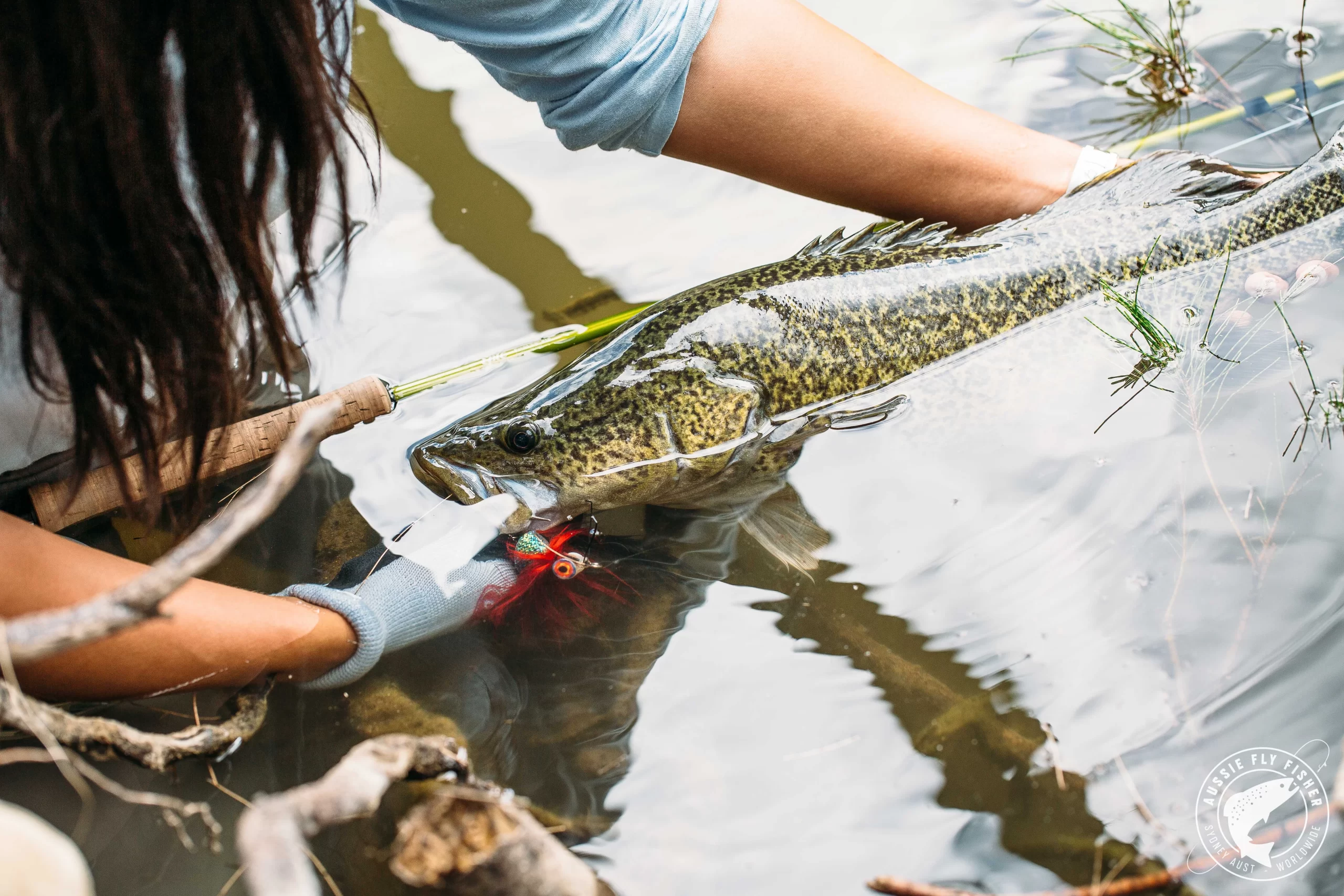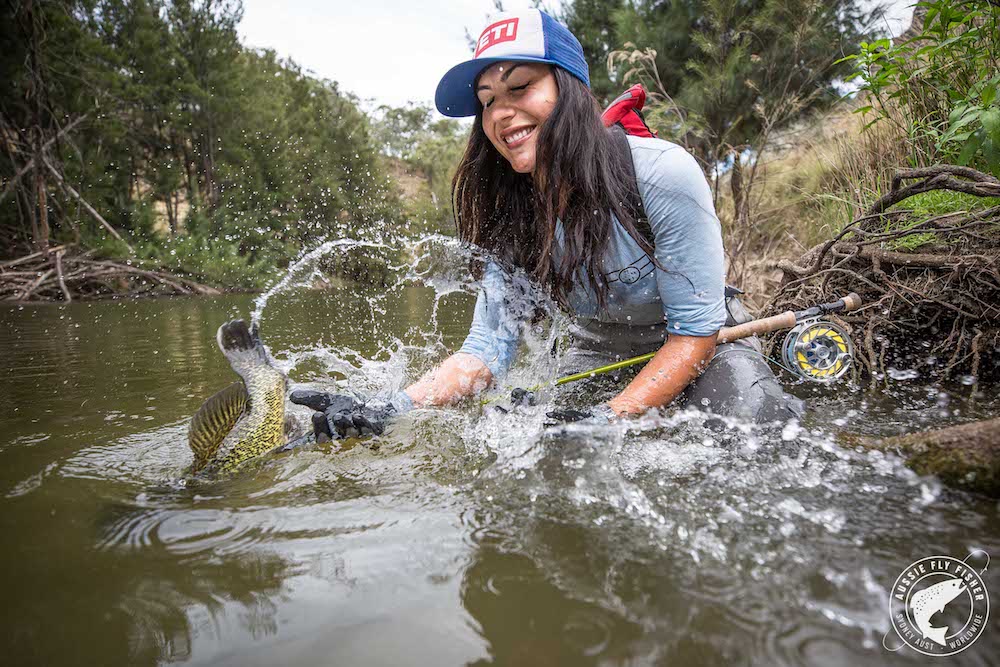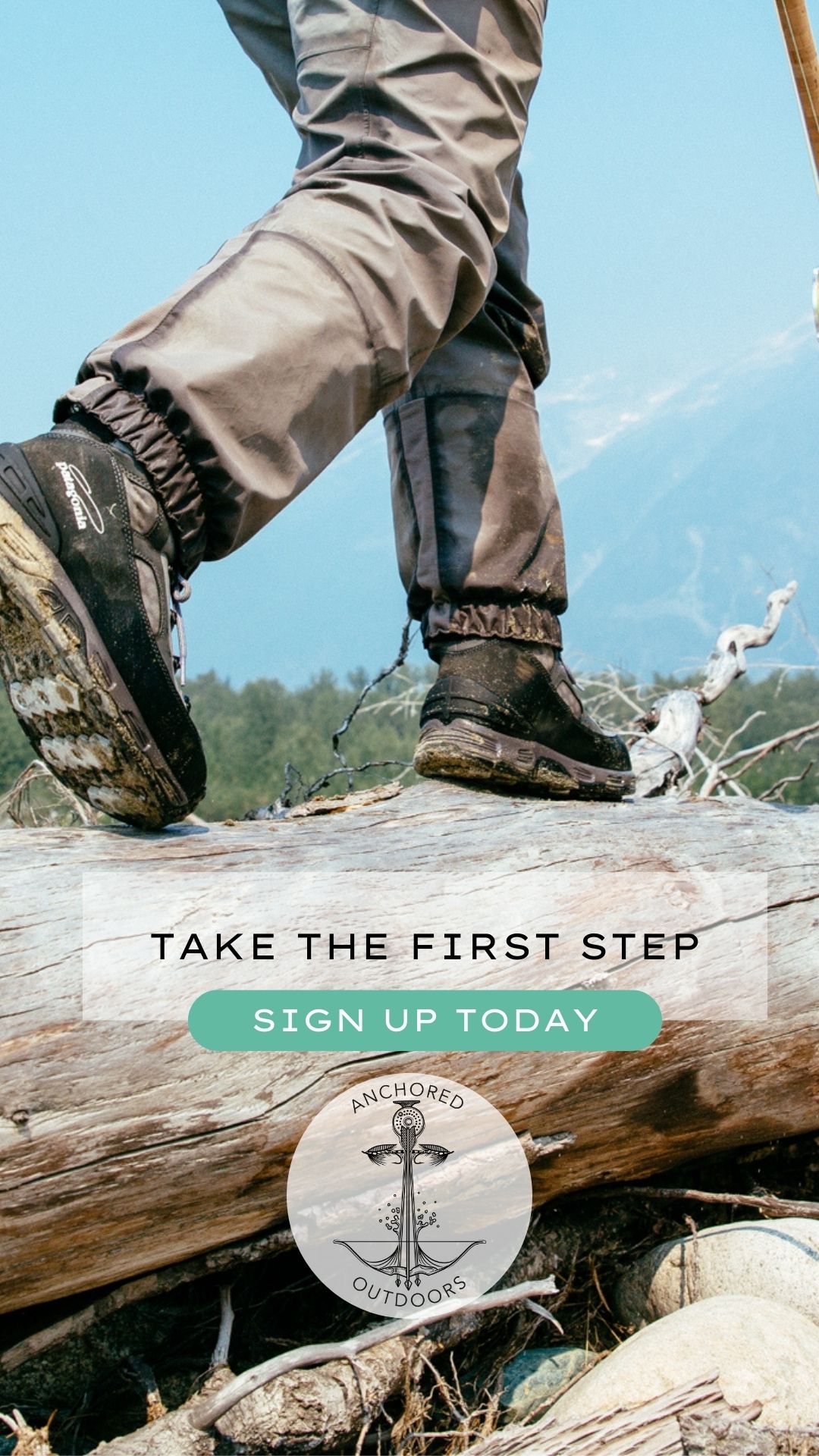When I decided to move my winters to Australia, part of me knew that I was sacrificing my love for one of the most special fisheries in the world. British Columbia’s winter steelhead migration is more than just recreation for me—it’s a way of life. For as long as I can remember, I’ve planned my work, free time, living arrangements, conservation efforts—even my relationships—around when and where the fish would be. It seemed unfathomable to miss a week of the season, let alone all of it.
It comforted me to know that summer steelhead were available to me the other six months of the year, but it almost felt like cheating… no suffering in snow-drenched gloves while fumbling with sink-tips, or purple lips desperate for a dark roast. But it was either sacrifice or divorce, so winter steelhead took a backseat to my vows, with the compromise that I would visit them every second Christmas.
The first three years of the trade-off ran smoothly. A passionate saltwater angler, I was happy chasing Australia’s indigenous marlin, permit, kingfish, giant trevally, and others on a long list of respectable species. The ocean’s mystery fed my soul with the humility and adventure I desired in all my fishing excursions, but something was still amiss. I craved the overwhelming presence of the west-coast’s looming mountains and the veiny rivers that surged through them.
I tried to calm my homesick by visiting New Zealand and the Snowy Mountains, but non-native fish didn’t excite me and regularly stocked fisheries interested me even less. Don’t get me wrong, the southern hemisphere’s breathtaking rivers and unique ecosystems made it easy to focus on the experience as a whole, but I still longed for the connection to an indigenous species.
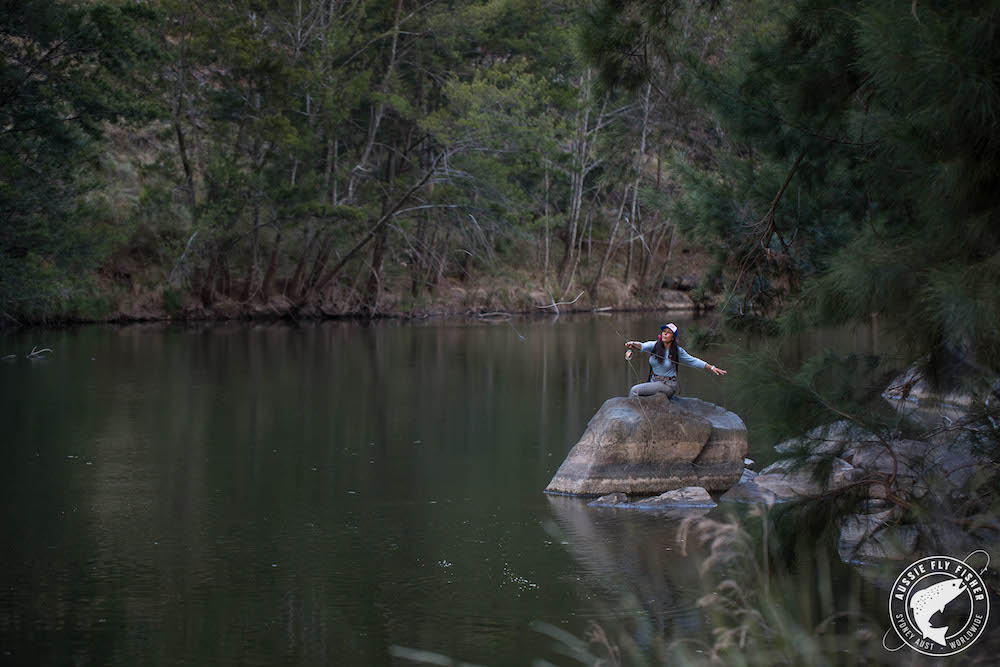
As I began to accept the fact that my options were limited, I heard tales of an indigenous freshwater monster that lurked in the depths of several Australian waterways. The Murray cod, rumoured to live up to 70 years, can reach 250 pounds in weight and almost five feet in length. It received its Australian name by way of a distant relative of the grouper/groper/cod family.
It’s a large, carnivorous, predatory fish found only in Australia. More specifically, it’s found in the Murray-Darling basin, a river system that drains three states in southeastern Australia. In Australia, it’s the largest fish to spend its entire life in fresh water, and it has played a role in the mythology of Aboriginal tribes. Though cod primarily feed on other fish, they are also known to eat birds, reptiles, crustaceans, and rodents. Already excessively territorial, Murray cod show increased aggression when protecting their eggs, which is a main reason the angling season is closed during their spawning period.
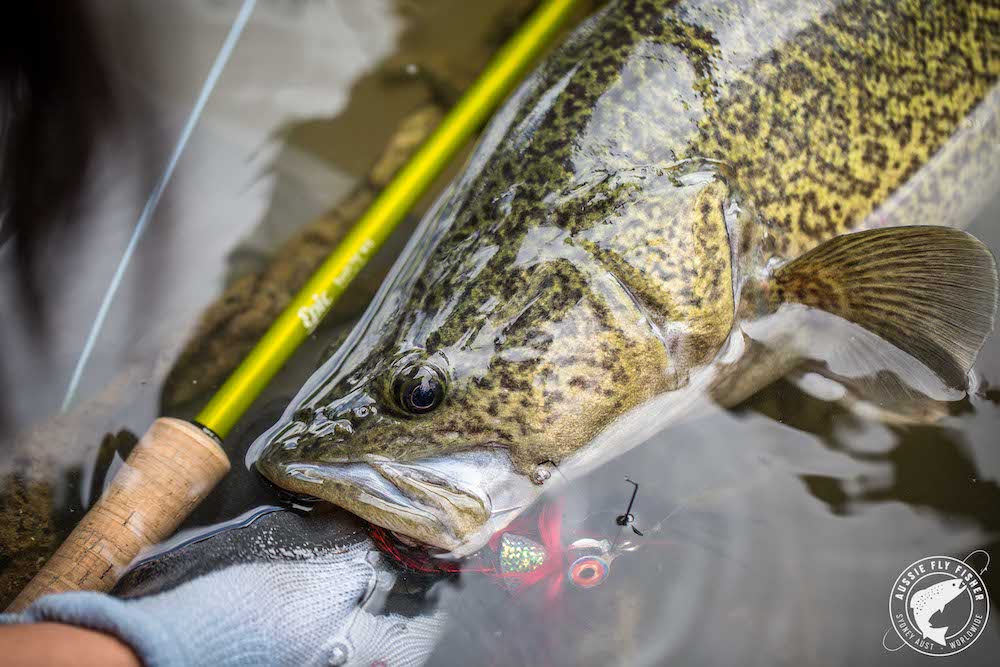
These fish may travel a substantial distance to spawn, but often return to the exact spot from which they left. Even more unusual, the female lays her eggs and departs, leaving the male to guard and oxygenate the eggs for several weeks during her absence. Murray cod are the only freshwater fish known to establish and defend a territory, then migrate upstream to establish and defend another territory specifically for spawning purposes.
Big fish in small, beautiful rivers? Topwater frenzies? I put the word out that I was looking for someone reputable to go cod fishing with and was promptly put in touch with Cam McGregor. Cam and his fiance, Katie Doyle, own River Escapes, a guiding operation based in northern Victoria. They met in the field while studying Murray cod, and it seemed fitting that two biologists would fall in love while Katie was working on the thesis for her PhD, the focal point of which was the diet of the Murray cod. Spending time with not only one, but two experts had me giddy.
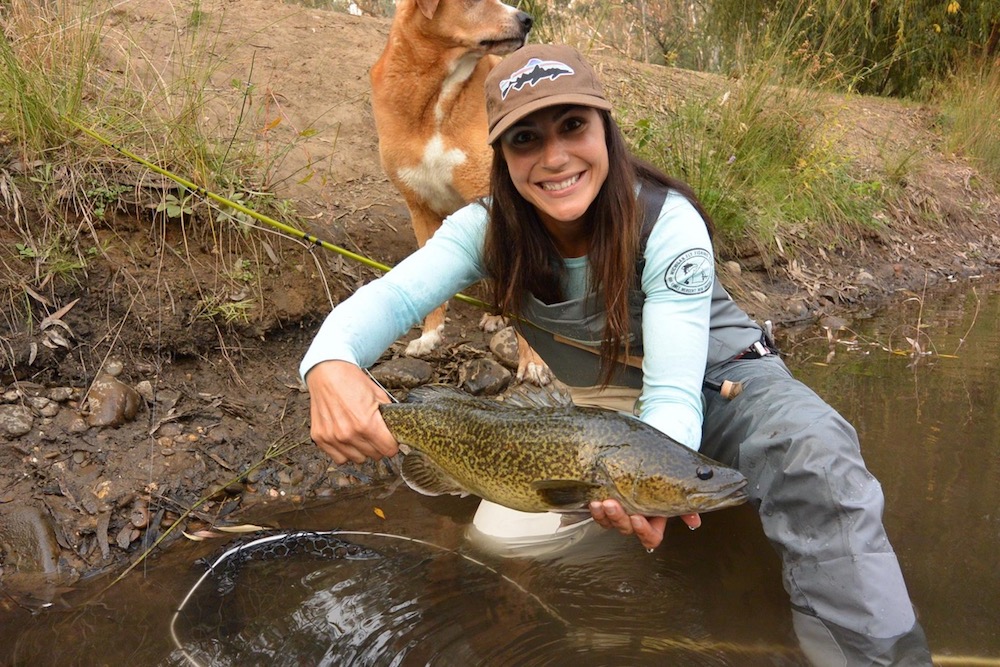
I promptly arranged to podcast the couple about the biology of the fish and scheduled several days fishing with Cam. We were to spend one day fishing from a raft on a nearby river, one day on foot on a smaller river system, and one day boating in a large lake with many deadheads. Cam is a fly-tier extraordinaire and I marveled at his feathery creations. His topwater patterns sliced through the air with ease, their “plooping” frequently the only sound as we cast in the low light. Cod hold tight to logs and other structure, making casting entertaining, strategic and, of course tricky. As the sun set, activity picked up and the sound of crashing cod echoed through the hollow night. Without daylight, knowing when to set the hook became difficult, and I missed more fish than I care to admit by setting the hook at the wrong time.

The entire experience was surreal. There were no other anglers on the river, leaving us to concentrate on every isolated bend of river. We held our breaths so as not to disturb the silence; our anticipation occasionally broken by the loud boof of a feeding cod.
The angling is similar to the bass fishing I’ve done over the years. The flies were cast towards structure near the bank and topwater patterns had to make plenty of noise, yet sit on the surface long enough between strips to allow the fish to get a decent eat. Wet flies needed a few seconds to sink to submerged logs and structure. Cam rowed slowly to allow me a fair shot at each section of habitat and I concentrated on keeping the fly from lodging itself in my body.
On our day on the stream we were the only anglers in evidence. On the day of our stillwater fishing we spotted a handful of spin-fishermen targeting cod for harvest. Cam explained that the majority of anglers in the area are trout anglers. I wondered if the less-than-overwhelming number of cod anglers about signified a shortage of people willing to fight for the species’ survival.
The question encouraged me to look further into cod conservation efforts. Cod populations have declined severely over the last couple of hundred years, a result of overfishing, habitat degradation, pollution, and mining. I thought of all the efforts that could be dedicated to the species if more people were passionate about the fishery. I searched high and low for a support organization and, apart from government management, found next to nothing.
Cam’s face said it all as we toured through one of Victoria’s heritage towns on our way to the stream. “Holy hell,” he said. “Australia really is the only place you can find these fish isn’t it? It just hit me now that there is nowhere else on earth they can be found.”
His eyes sparkled a little brighter, the creases around them scrunching in thought as he realized what losing these fish would mean. He held his breath as though it might interfere with his thinking. I knew what this look meant. There was a fire kindling inside of him.
That night as I sat with Cam and Katie for the podcast, Katie shared the studies from her thesis. Much of it was about the cod’s diet—one of the missing links to establishing a conservation plan. I decided to throw gas on the fire, “We could always start a cod-specific foundation,” I said. Her eyes sparkled, she looked at Cam and back at me.
We sat until the early hours of the morning, strategizing on how to put the pieces together. Strangely and suddenly I felt at home, fighting again for something I believed in, for something that belonged and deserved to be where it was, for something that needed us as much as we needed it. I felt the familiar spark of a connection to an indigenous species, and it didn’t even have to be a steelhead to make it feel right.
Thank you Josh Hutchins for the incredible photos! http://aussieflyfisher.com
